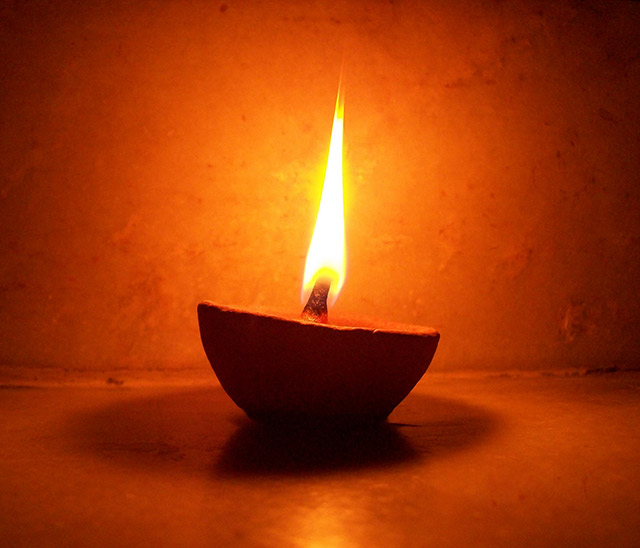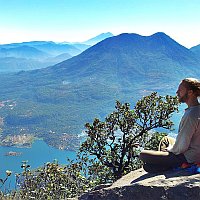Guidance for the deeper levels of Yogic practice
Many of us ache for infallible guidance promised by great gurus who had—or have—a higher perspective to know exactly what is needed and best for our growth. Unfortunately, especially in these modern times, many such gurus turn out to be quite underwhelming, if not disappointing, upon closer inspection. These days everyone wants to be a Yoga teacher, but few have what it takes to be a Yogi first.
Any teacher with confidence, sensitivity and decent rhetorics quickly gathers a following, which exponentially grows, giving the increasing impression of credibility.
Some of them even have made enough actual progress on the path to develop a degree of personal power—always a huge challenge when it appears. Power tempts the ego, which is often not rooted out completely, to abuse this capacity for less-than-holy purposes. Examples abound, think Maharishi Mahesh Yogi (the Beatles’ guru), who was distracted from sublime perfection by wealth and power as they came with popular success.
On the energetic path of Yoga we develop tremendous potential in certain aspects of our being. Asanas, pranayama, kriyas, bandhas and meditation can—with proper instruction—allow an aspirant not only to overcome impurities and elevate consciousness, but also to develop certain extraordinary abilities like telepathy, telekinesis, clairvoyance, teleportation, etc.
If this sounds like make-believe or the stuff of legend to you, simply look at the sizable amount of very credible accounts out there.
Ram Dass (Richard Alpert) for instance collected hundreds of his co-devotees’ memories of the late Neem Karoli Baba in his book The Miracle of Love, many of them describe the extraordinary feats of the humble master: transporting himself to far away places instantly, appearing in several places at once, generally knowing everyone’s thoughts and many events of the future.
Never did he admit, much less show off, his abilities. He actually denied them insistently like a true master always should according to both, the ‘Yogic etiquette for siddhis (perfections)’, and the absence of an ego giving rise to lowly desires.
He is by far, not the only example for siddhis are mentioned in many of the ancient Indian scriptures as side effects of spiritual practice that should never distract us from the actual goal, which is of course, Self-realization. Extraordinary powers are a temptation many teachers have fallen prey to as it is hard to resist using them for desires of the ego. Money, influence, fame and sex were and are the subject of scandal after scandal around teachers (and others) the world over.
But we should never think that there are no genuine cases, just because most we hear about are scandalous.
The lineage of Paramahansa Yogananda abounds with fascinating tales of the masters’ feats and no scandals to speak of. In his famous book ‘Autobiography of a Yogi’, really one of the first books to read when embarking on the path of Yoga, the same miraculous abilities are described.
Yet, we should not conclude that superior abilities are the best proof of a teacher being ‘for real’. Some of the greatest teachers have never displayed unusual powers and here’s why: Spiritual evolution can be seen as a tree that can grow either like an oak—wide and strong but relatively low—representing well-developed ways of dealing with the world (like siddhis) yet not reaching to the highest levels of consciousness. Or it can be more like a poplar—growing very tall and skinny—signifying full realization without displaying ‘worldly powers’.
Such a master is Sri Ramana Maharshi (1879-1950), commonly regarded as one of the greatest rishis (saints) of modern India.
The bottom line is that this world holds more in store for us than we are told while growing up, more than we can even fathom. True masters have existed throughout history and all cultures. They may not be common as it takes rare qualities to become one, but they exist. It is our karma that decides which teacher we come across when and the saying goes, “When the student is ready, the teacher appears.”
That now reminds us of the first quality we need to develop on the path: patience.
A young person can be forgiven their impatience, but if one has not learned this ‘trick’ over a few decades they really have not paid attention.
Instead of rushing from one promising lead to another, why don’t we just rest in our practice, letting all intentions and interests be for the ‘time being’, all will take care of itself in its due course. Any spiritual practice has the potential to make us awaken to the Eternal Now, we just need to patiently practice for more than a few minutes (or even months).
We remain aware of intuitive pulls and callings, but without obsessing about them. Many of the great masters of all time have put forth that the master is ultimately within and by listening calmly and quietly anyone can find this infinite spring of wisdom.
Spiritual knowledge (jnana) is not conveyable in words as words are limited and designed for ‘the world’ only.
True knowledge arises from within, it is beyond doubt or arguments, its truth stands shining brightly without needing to convince anyone.
A wonderful effect of Yoga is indeed that it makes us aware of the Stillness inside, needed to hear this ancient unchanging wisdom. Yoga calms down the otherwise incessant babble of the mind in favor of listening to the subtler layers of creation.
This is the master within. So go, sit with patience, let awe and wonderment take the lead to where no questions remain.
Love elephant and want to go steady?
Sign up for our (curated) daily and weekly newsletters!
Editorial Apprentice: Richard May / Editor: Renée Picard
Photo: Amit Gaur / Flickr












Read 0 comments and reply